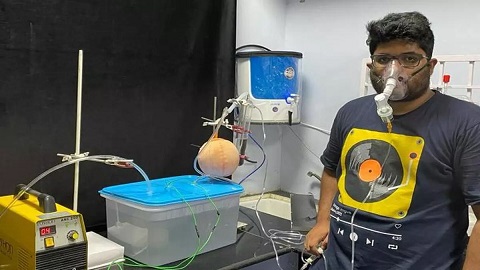Oxygen therapy plays a critical role in supporting patients with chronic respiratory conditions. An oxygen concentrator is a device that can help streamline access to therapeutic oxygen in both healthcare facilities and home settings. Examining the technology behind oxygen concentrators provides insights into how they make oxygen delivery more efficient.
How Oxygen Concentrators Work
Oxygen concentrators utilise a separation technique called pressure swing adsorption to produce concentrated oxygen onsite. This eliminates the need to deliver heavy oxygen cylinders for supplemental therapy. Here is an overview of the critical processes:
Air Intake and Compression
An oxygen concentrator pulls in ambient air and runs it through a compressor. This pressurises the air in preparation for the subsequent phases. Compression also starts concentrating the oxygen by squeezing air into a smaller space.
Sieving Nitrogen Out of the Air
The pressurised air then moves through specialised tubes filled with zeolite pellets. Zeolite is a mineral that adsorbs nitrogen more strongly than oxygen under pressure. As the air diffuses through tiny zeolite pores, nitrogen molecules get caught while oxygen passes through. This leaves nearly pure oxygen to exit the other end of the tubes.
Accumulation and Storage
The oxygen then reaches one of two chambers where it can accumulate, reaching levels over 90%. An electronic sensor monitors the purity and switches between chambers when one nears capacity. This ensures a continuous flow of oxygen. Some concentrators also feature an integrated oxygen storage tank for backup reserves.
Benefits of Utilizing Oxygen Concentrators
Oxygen concentrators provide several advantages over traditional oxygen delivery methods in healthcare environments. This makes them a strategic investment for cost savings and enhanced care capacity.
No Delivery Logistics
With concentrators, facilities eliminate oxygen cylinder deliveries, which are costly and can cause supply chain issues. Producing oxygen onsite resolves reliance on transportation and distribution variables. This also removes the need for personnel to swap heavy tanks manually.
Adjustable and Continuous Flows
Concentrators can adjust oxygen production based on real-time demand because the extraction process operates continuously. This ensures the flexibility to match patient needs without keeping excess standing reserves. The continuous flow also prevents disruptions from running out of oxygen.
Lower Long-Term Costs
Though concentrators have considerable upfront costs for purchase and installation, expenses decrease substantially over long periods compared to routine cylinder deliveries. As healthcare budgets tighten, this cost advantage positions concentrators to offset their initial capital outlay.
Compact Footprint
With no bulky tanks stored onsite, concentrators free up valuable clinical space for other equipment or patient beds compared to extensive tank inventories. Some compact units are small enough to transport to bedsides as well. This allows flexible positioning to give patients access where it’s convenient.
Future Outlook
Several technology trends position oxygen concentrators for expanded roles in the coming years. Continued development in the following areas will shape the next generation of devices.
Increasing Concentration Capabilities
Engineers continue finding ways to enhance the purity and volumes achievable through pressure swing adsorption and similar gas separation techniques. As performance benchmarks rise for concentration rates and flow capacities, this expands the range of conditions that oxygen concentrators can therapeutically assist.
Connectivity and Telemedicine
Some oxygen concentrators now integrate wireless connectivity and data collection tools to track usage metrics. This allows remote monitoring and care coordination by clinicians. As telehealth adoption accelerates, this connectivity with therapy devices will provide more comprehensive patient insights.
Home and Individual Use
While traditionally utilised in professional healthcare settings, user-friendly home oxygen concentrators are also entering the market. As technology sizes decrease, options tailored for individual ownership rather than shared clinical use will assist patients seeking in-home therapy solutions with provider guidance.
Oxygen concentrators have already delivered tangible improvements in therapeutic oxygen access within healthcare environments. With continued technology enhancements on the horizon, these devices will shape the future infrastructure for streamlined and flexible oxygen provision across both care facilities and residential settings. Their unique oxygen production capacity is positioned to unlock new paradigms in respiratory care.
Conclusion:
In conclusion, oxygen concentrators like the Everflo concentrator utilise innovative gas separation techniques to provide on-demand enriched oxygen from ambient air. This eliminates the incumbent challenges of routinely delivering oxygen cylinders across healthcare environments. Concentrators offer care providers more flexibility to scale oxygen availability alongside dynamic clinical demands in a cost-effective manner.
Looking ahead, engineering advances and connectivity integrations will expand oxygen concentrators’ capabilities and accessibility even further. Home and individual use cases are emerging alongside traditional clinical applications. With technology positioning concentrators for greater mobility and personalisation, they are poised to transform therapeutic oxygen delivery paradigms through unprecedented production localisation. Healthcare facilities, residential users, and device manufacturers benefit from their continuously improving performance in concentrating oxygen’s healing properties.
